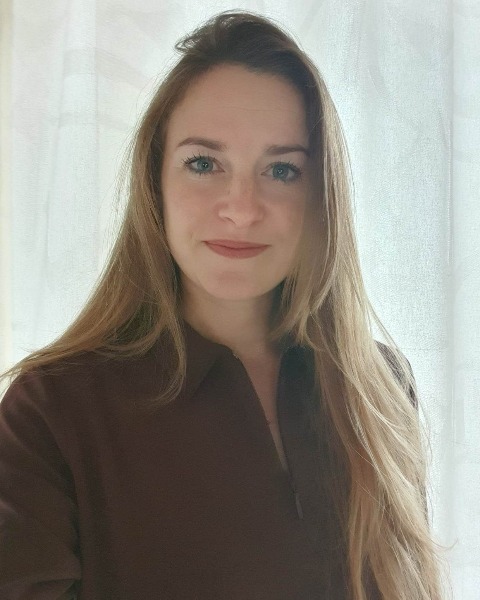Back
3 Hour Workshop
Moving Forward: Understanding the Causes of Invisibility and Breaking the Barriers to Visibility
Monday, March 17, 2025
1:30 PM – 5:00 PM US Eastern Time
Location: Georgian
Learning Level: Advanced

Doris D'hooghe, BA (she/her/hers)
Psychotraumatologist
Traumacenter Belgium
Sint Margriete, Oost-Vlaanderen, Belgium
Layla M. Brack, MA (she/her/hers)
Psychotraumatologist
Traumacentre Belgium
Blankenberge, West-Vlaanderen, Belgium
Abstract
This workshop thoroughly investigates why trauma frequently remains unnoticed and the various factors contributing to its invisibility. It addresses the underlying causes on an individual level and then expands the discussion to explore how this invisibility manifests and is perpetuated in society and politics. The workshop provides participants with practical and specific methods to help victims who feel unseen gain visibility. The proposed methods foster an environment where recognizing and validating victim's experiences, empowering them, and taking concrete actions to support them are core values. Trauma can damage individuals emotionally, psychologically, physically, socially, and relationally. When individuals hold beliefs like "I am bad," they often internalize blame for the traumatic events, which discourages them from seeking help. Shame is a powerful trauma emotion that leads individuals to feel embarrassed, and the fear of being stigmatized can prevent them from sharing their trauma. Trauma may lead individuals to isolate themselves, reducing chances for others to detect and address their suffering. When traumatic memories are buried or fragmented, the trauma remains hidden from both the individual's conscious awareness and the external world. These victims’ visible symptoms make them vulnerable to stigmatization, which not only perpetuates trauma but also contributes to its invisibility. The profound impact of their suffering triggers various coping strategies, such as dissociation, denial, minimization, and suppression. These survival mechanisms further conceal the trauma on an individual and communal level. Individual trauma does not happen in a vacuum but occurs within the context of the community. Communities frequently face a dilemma in choosing whether to support the victim or the perpetrator as they struggle with the complexities of human vulnerability and the reality of evil. Many people have an inherent tendency to deny the existence of evil. Evil disrupts our basic trust in the world's order, and to deny its existence helps us construct a reality that provides a false sense of safety and predictability. As a result, this tendency leads to people failing to help, not remembering the suffering, and avoiding discussing the issues. The DARVO tactic (Deny, Attack, and Reverse Victim and Offender) may be employed to undermine the victim's credibility. On the other hand, the victim wants people who actively respond and ensure their suffering is recognized and remembered rather than ignored or forgotten. To overcome these barriers to visibility, we must create space for the victim to speak out, share their experiences, tell their stories, and name the hurt. Empowering individuals with tools and confidence-building measures is crucial for enhancing well-being. It benefits not only the individuals themselves but also contributes to society's overall health and progress. Bearing witness helps validate the survivor's suffering, fostering a sense of connection. Recognizing our common humanity by validating the universality of pain helps break the silence. Educate people about the shared nature of trauma and raise public awareness by organizing campaigns highlighting trauma and its impact. Engage with policymakers and government officials to advocate for legal and policy changes that protect survivors.
Timed Outline
15 Minutes - Introduction
40 Minutes - Understanding the Invisibility of Trauma
40 Minutes - Manifestations and Perpetuation of Invisibility
30 Minutes - Break
70 Minutes - Breaking Barriers to Visibility
20 Minutes - Conclusion and Q&A
This workshop thoroughly investigates why trauma frequently remains unnoticed and the various factors contributing to its invisibility. It addresses the underlying causes on an individual level and then expands the discussion to explore how this invisibility manifests and is perpetuated in society and politics. The workshop provides participants with practical and specific methods to help victims who feel unseen gain visibility. The proposed methods foster an environment where recognizing and validating victim's experiences, empowering them, and taking concrete actions to support them are core values. Trauma can damage individuals emotionally, psychologically, physically, socially, and relationally. When individuals hold beliefs like "I am bad," they often internalize blame for the traumatic events, which discourages them from seeking help. Shame is a powerful trauma emotion that leads individuals to feel embarrassed, and the fear of being stigmatized can prevent them from sharing their trauma. Trauma may lead individuals to isolate themselves, reducing chances for others to detect and address their suffering. When traumatic memories are buried or fragmented, the trauma remains hidden from both the individual's conscious awareness and the external world. These victims’ visible symptoms make them vulnerable to stigmatization, which not only perpetuates trauma but also contributes to its invisibility. The profound impact of their suffering triggers various coping strategies, such as dissociation, denial, minimization, and suppression. These survival mechanisms further conceal the trauma on an individual and communal level. Individual trauma does not happen in a vacuum but occurs within the context of the community. Communities frequently face a dilemma in choosing whether to support the victim or the perpetrator as they struggle with the complexities of human vulnerability and the reality of evil. Many people have an inherent tendency to deny the existence of evil. Evil disrupts our basic trust in the world's order, and to deny its existence helps us construct a reality that provides a false sense of safety and predictability. As a result, this tendency leads to people failing to help, not remembering the suffering, and avoiding discussing the issues. The DARVO tactic (Deny, Attack, and Reverse Victim and Offender) may be employed to undermine the victim's credibility. On the other hand, the victim wants people who actively respond and ensure their suffering is recognized and remembered rather than ignored or forgotten. To overcome these barriers to visibility, we must create space for the victim to speak out, share their experiences, tell their stories, and name the hurt. Empowering individuals with tools and confidence-building measures is crucial for enhancing well-being. It benefits not only the individuals themselves but also contributes to society's overall health and progress. Bearing witness helps validate the survivor's suffering, fostering a sense of connection. Recognizing our common humanity by validating the universality of pain helps break the silence. Educate people about the shared nature of trauma and raise public awareness by organizing campaigns highlighting trauma and its impact. Engage with policymakers and government officials to advocate for legal and policy changes that protect survivors.
Timed Outline
15 Minutes - Introduction
40 Minutes - Understanding the Invisibility of Trauma
40 Minutes - Manifestations and Perpetuation of Invisibility
30 Minutes - Break
70 Minutes - Breaking Barriers to Visibility
20 Minutes - Conclusion and Q&A
Learning Objectives:
At the conclusion of this session participants will be able to:
- Identify three factors that cause trauma to go unnoticed
- Analyze three personal factors contributing to trauma invisibility
- Utilize empowerment tools to help people who feel unseen gain visibility
- Assess DARVO as a perpetrator tactic undermining the victim’s credibility
- Design a trauma awareness campaign

